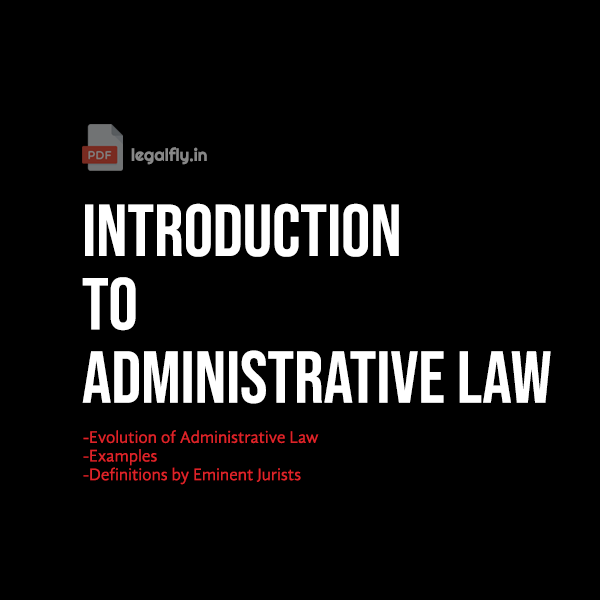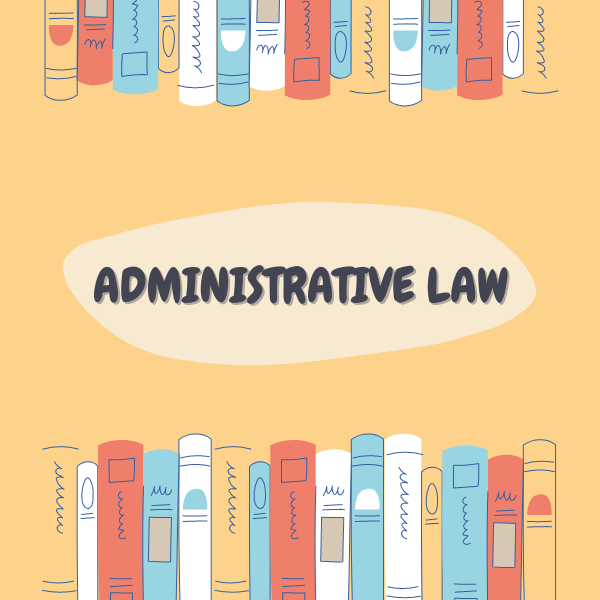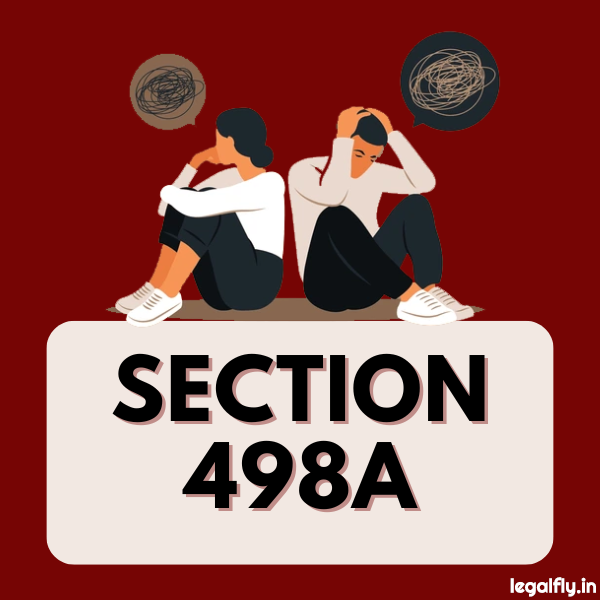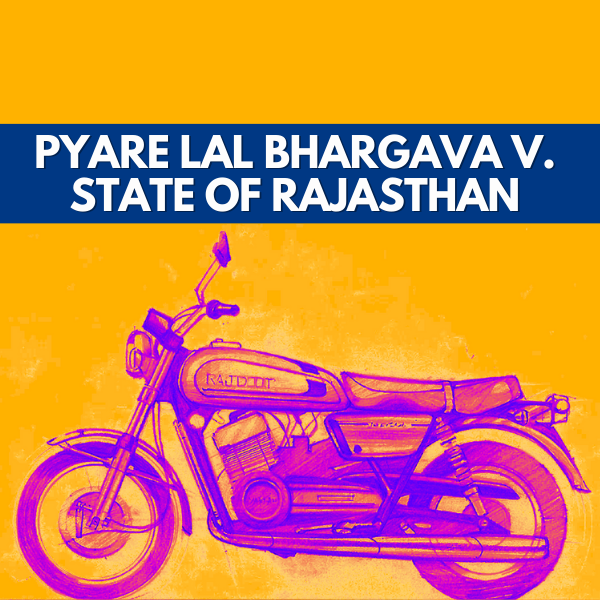Table of Contents
Introduction to Administrative Law
In this article, we will explore administrative law. Consider administrative law the rulebook for a cricket match in which government agencies are the players. Just as the rulebook guides how each player should play, their roles, and how the game interacts with the spectators, administrative law does the same for government agencies.

Take the example of the Telecom Regulatory Authority of India (TRAI). It is structured and operates within the framework laid down by administrative law. This legal field determines how TRAI formulates policies, interacts with telecom service providers, and addresses the grievances of the public. In essence, administrative law ensures that the match of governance is played fairly and effectively, always keeping the interests of the spectators, i.e., the citizens, at heart.
The Concept of Administrative Law
You might wonder why we need such a law. Well, consider the words of Lord Acton, who famously said, “Power tends to corrupt, and absolute power corrupts absolutely.” This insight brings to the fore the core of administrative law – it’s about ensuring that power doesn’t get concentrated or abused.
James Madison, a key figure in crafting the U.S. Constitution, echoed a similar sentiment. He warned against the accumulation of all powers – legislative, executive, and judiciary – in the same hands, describing it as the very definition of tyranny. These wise words underline the necessity of administrative law in maintaining balance among the different organs of government.
As we continue with this article on the introduction to administrative law, we’ll see how it functions as a necessary counterbalance, ensuring power isn’t overly concentrated and that government operations are kept in order. Let’s get started!
Understanding Administrative Law
So, what is administrative law? Let’s simplify by asking a few questions: Who exercises administrative law? What is its scope? Where is it applied? The answers to these questions will help us grasp its vast scope.
The Evolution of Administrative Law
We can trace back the roots of administrative law to the era of the ‘Police State.’ During this time, the role of the government was mainly limited to defense, maintaining law and order, administering justice, and collecting taxes. Picture the government as a strict traffic officer, primarily concerned with keeping order and enforcing rules.
As societies evolved, the role of the government expanded, marking the transition towards a ‘Social Welfare State.’ Now, the government has acted as a guide, protector, and provider, promoting economic and social well-being, ensuring equal opportunities, and striving for equitable distribution of wealth. In this new avatar, the government began to act more like a coach, guiding, mentoring, and stepping in when necessary to ensure everyone got a fair shot.
The phase of the ‘Laissez-Faire‘ or ‘let do’ policy also plays a significant role in our understanding of administrative law’s evolution. During this period, the mantra was minimum government control. It was a hands-off approach like a parent allowing their teenage kid to make their own decisions. The philosophy rested on believing that governments and laws should minimize interference in business, finance, or working conditions.
Understanding this evolution gives us a clearer picture of how administrative law has transformed in response to societal needs. So, as we move ahead, remember that just like society, administrative law isn’t static – it’s a dynamic, evolving field that reflects the changes around us.
Administrative Law in India
During the era of British rule, the primary focus of administrative law was profit-oriented. The British Government implemented numerous acts regulating public safety, health, and transportation to administer India for their benefit efficiently. Some of these critical acts included The Stage Carriage Act of 1861, which introduced the practice of granting administrative licenses, and the Northern Canal and Drainage Act of 1873. During World War II, the British enacted the Defence of India Act of 1939 as part of their wartime governance strategy.
However, with India’s independence came a paradigm shift. The new democratic India, aiming to establish a ‘Sovereign, Socialist, Secular, Democratic Republic,’ embraced the idea of a ‘Social Welfare State.’ The Preamble of our constitution now emphasizes delivering justice, ensuring liberty and equality, and promoting a sense of fraternity among its citizens.
Article 39 of the Indian Constitution encapsulates this commitment to the welfare state. It mandates that the state strive to ensure an equitable distribution of resources and create an economic system that doesn’t lead to the concentration of wealth and means of production to the detriment of the common good.
So, while administrative law in India during the British era was more about managing a colony for profit, independent India adopted a more people-centric approach. This transformation can be seen as the country moving from a strict rule-based system to a more caring, welfare-oriented one.
The Three Pillars of Governance
Three main government organs operate within the administrative law framework: the legislature, the executive, and the judiciary. While distinct in their roles, these pillars of governance are interconnected through the strands of administrative law.
First, we have the Legislature. They’re like the brainstormers in the group, the one who comes up with the ideas – or, in this case, enacts the laws. They create or modify new rules based on the country’s changing needs and aspirations.
Next comes the Executive, the action-taker of the group. They take the laws enacted by the Legislature and implement them. If the Legislature says, “We need a rule that everyone must recycle,” the Executive is the one who ensures recycling bins are available and people are educated about why and how to use them.
Finally, we have the Judiciary. Think of them as the problem-solvers in the group. When disputes arise about interpreting the laws, it’s the Judiciary’s job to step in. They analyze the laws and decide how they apply in specific cases, ensuring that the rule of law is maintained and justice is served.
So, that’s our trio – the Legislature, Executive, and Judiciary – each with their distinct role, working harmoniously to ensure smooth governance.
Administrative Authorities
The President is at the top of India’s administrative structure and acts as the head of state. Following the President is the Vice-President. Then we have various ministers and departments, each assigned to specific areas like education, finance, or women and child development, to name a few.
Let’s understand this with some real-life examples:
For example, the National Commission for Protection of Child Rights was established under the Commissions for Protection of Child Rights Act 2005. It aims to protect child rights, and it operates under the broader umbrella of the Ministry of Women and Child Development.
Then there’s the Central Board of Direct Taxes. It was formed under the Central Board of Revenue Act of 1963 and is part of the Department of Revenue. This board functions under the Ministry of Finance, just as a finance manager would in a company.
Lastly, consider the University Grants Commission, established under the University Grants Commission Act 1956. It works under the Ministry of Education, similar to a department head in an education institution.
So, these administrative authorities are like cogs in the vast machinery of governance, each playing a crucial role in the smooth execution of laws.
The “Why” of Administrative Law
But why do we need administrative law?
Primarily, administrative law helps keep governmental powers within the bounds of law. Imagine a cricket game without any rules or an umpire. Sounds chaotic, right? Similarly, without administrative law, the government might overstep its authority or misuse its power. Administrative law, like a rulebook or an umpire, provides the guidelines the government must follow when carrying out its duties.
Additionally, administrative law is crucial for protecting our private rights and individual interests and maintaining the rule of law. It’s like the guardian who ensures that while the government does its job, it doesn’t infringe upon our rights or overlook our interests. For example, administrative law might step in to protect an individual’s property rights when a government project threatens to encroach upon them.
Administrative law is like the balancing scale that keeps governmental power and individual rights in equilibrium. It serves as a legal check on the exercise of executive power.
Various Definitions of Administrative Law
Now, let’s understand the essence of administrative law by looking at the definitions proposed by some eminent jurists.
K.C. Davis was one of the pioneers in the field of administrative law. According to him, administrative law deals with the powers and procedures of administrative agencies, mainly how courts review administrative actions. In simpler terms, Davis says administrative law is about how government agencies work and how we can challenge their actions if required.
Ivor Jennings, another renowned legal scholar, viewed administrative law as the law related to the administration. He emphasized the organization, powers, and duties of administrative authorities. However, some critics point out that Jennings’ broad definition doesn’t include the remedies available to a person when their rights are affected by administrative actions.
In his definition, A.V. Dicey focused on state officials’ legal status and liabilities and the civil rights of individuals dealing with these officials. However, this definition faced criticism for not covering all aspects of administrative law, like the study of administrative authorities and their various powers and functions.
Wade and Phillips approached administrative law as a branch of public law, dealing with the composition, powers, duties, rights, and liabilities of the government organs engaged in administration. They focused on the broader picture of how various government bodies function.
Finally, let’s look at Jain and Jain’s definitions. They define administrative law as dealing with administrative organs’ structure, powers, and functions, their limits, the methods they use, and the legal remedies available to individuals against them. They sought to provide a comprehensive understanding of administrative law.
As you see, each definition offers a unique perspective, contributing to our understanding of administrative law. Like how different ingredients make a perfect dish, these varying viewpoints give us a complete and rich knowledge of administrative law.
Conclusion
In essence, administrative law serves as the backbone of the administrative state. Its evolution, examples, and definitions reflect its significance in maintaining a just and orderly society. As we continue to explore this vast legal terrain, we find it isn’t just about control and power—it’s about balance, justice, and the pursuit of an effective and efficient administrative system.
YouTube Video on ‘Introduction to Administrative Law | Evolution, Examples & Definitions’
For further insight, Check out the video on my YouTube channel:
Download PDF Notes on Introduction to Administrative Law
You can download the presentation used in my YouTube Video, ‘Introduction to Administrative Law | Evolution, Examples & Definitions,’ in PDF format for free here.







